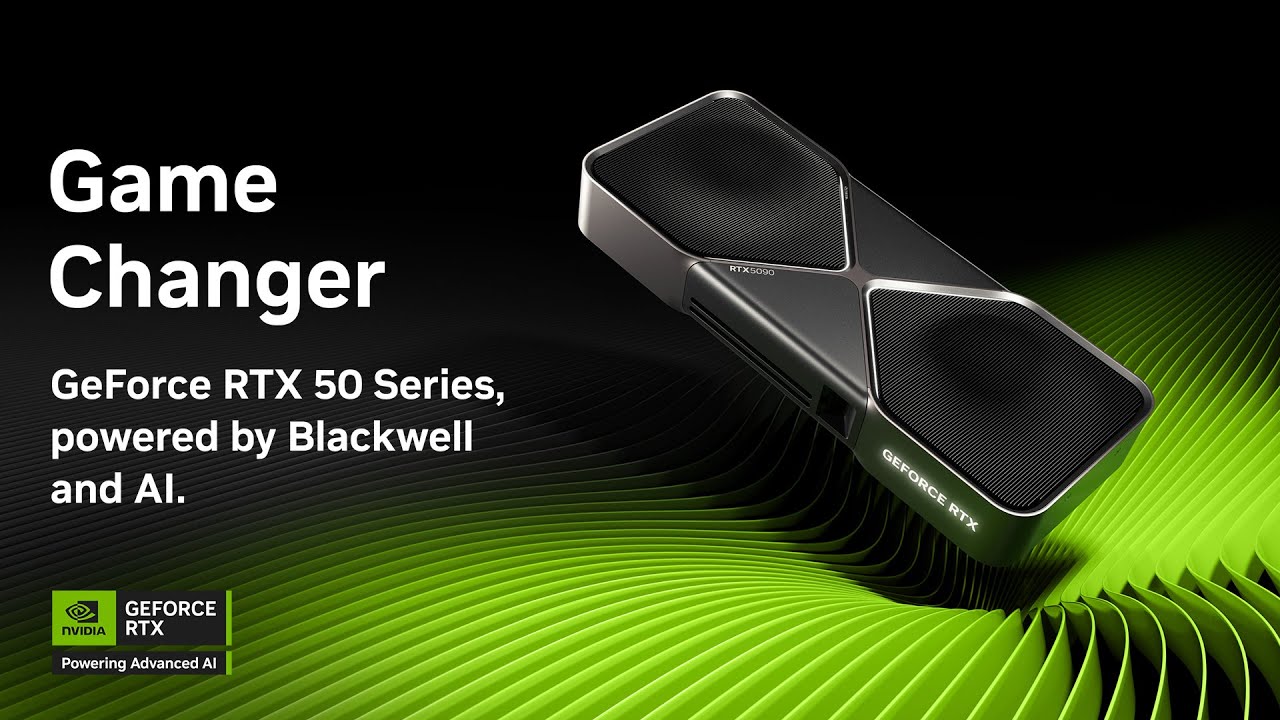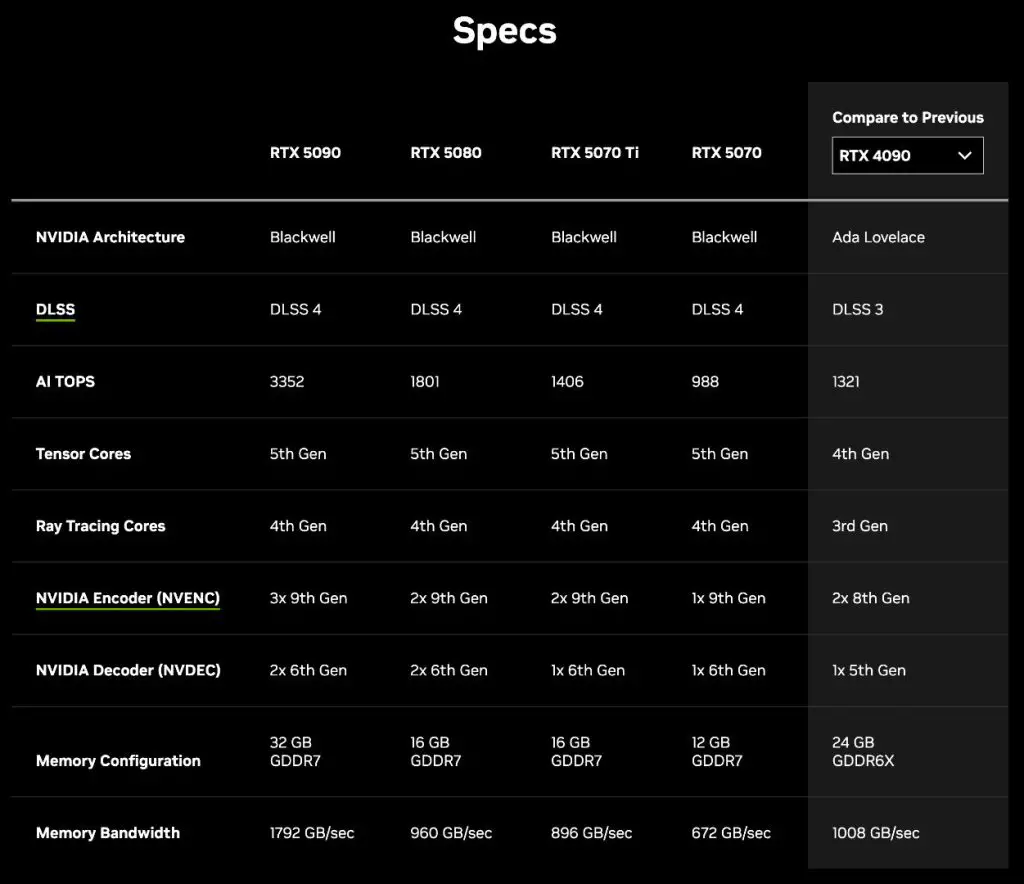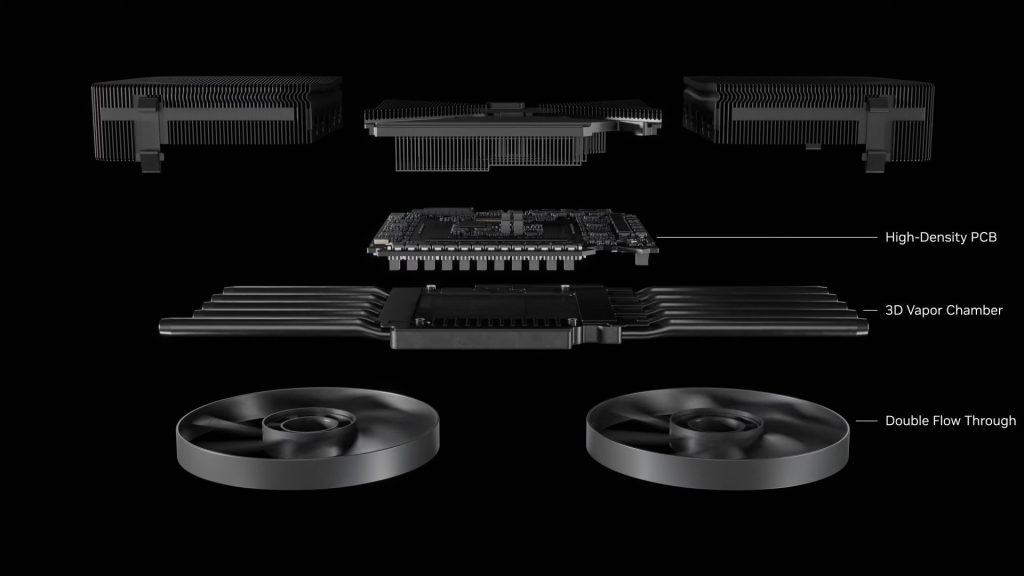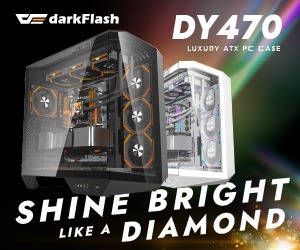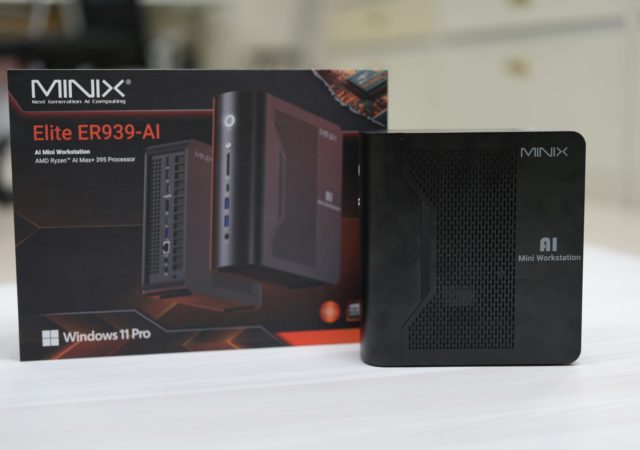NVIDIA has kicked off CES 2025 with the unveiling of its next-generation GeForce GPUs: the GeForce RTX 50-series. This highly anticipated lineup introduces a host of new features, with a strong emphasis on AI-driven advancements. While NVIDIA’s CEO, Jensen Huang, kept the announcement brief, let’s dive into the specifics of what the new RTX 50 series brings to the table.
A New GeForce RTX 50-Series Family
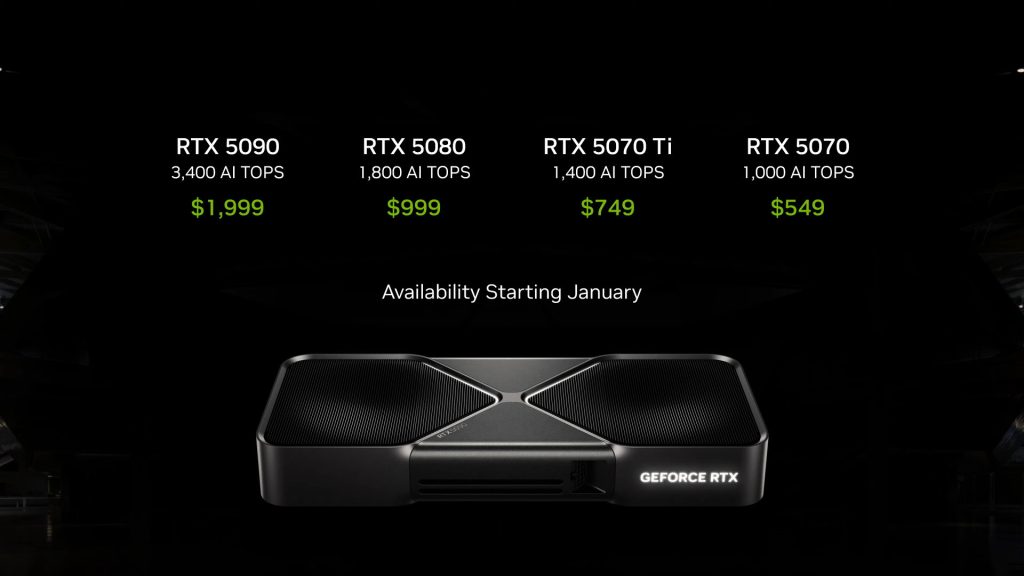 The initial lineup of the RTX 50-series includes four variants, each priced to cater to different performance needs. These GPUs leverage the latest GDDR7 memory technology, delivering an impressive memory bandwidth of 1.81TB/s. The flagship RTX 5090 finally sees an increase in VRAM, addressing the demands of AI-driven applications, while other variants maintain similar VRAM configurations as their predecessors.
The initial lineup of the RTX 50-series includes four variants, each priced to cater to different performance needs. These GPUs leverage the latest GDDR7 memory technology, delivering an impressive memory bandwidth of 1.81TB/s. The flagship RTX 5090 finally sees an increase in VRAM, addressing the demands of AI-driven applications, while other variants maintain similar VRAM configurations as their predecessors.
The vast improvement in performance across multiple metrics are achieved via brand new generations of Tensor Cores, RT Cores, NVIDIA’s proprietary encoder and decoder as well as faster and larger VRAM and bandwidth.
One interesting part is that the RTX 5090 FE is only a dual-slot card with a smaller PCB compared to the RTX 4090 despite having a higher TDP. This is done by using a high-density PCB sitting on top of a 3D vapor chamber and twin fans at the bottom in addition to strategic designs of the shroud and fins that ended up making the “entire GPU block a cooler”, as mentioned by Jensen himself.
Introducing DLSS 4
And as expected, the DLSS suite of AI-based technology is now in version 4 which adds even more goodies including enhanced resolution upscaling, frame generation, and proprietary anti-aliasing.
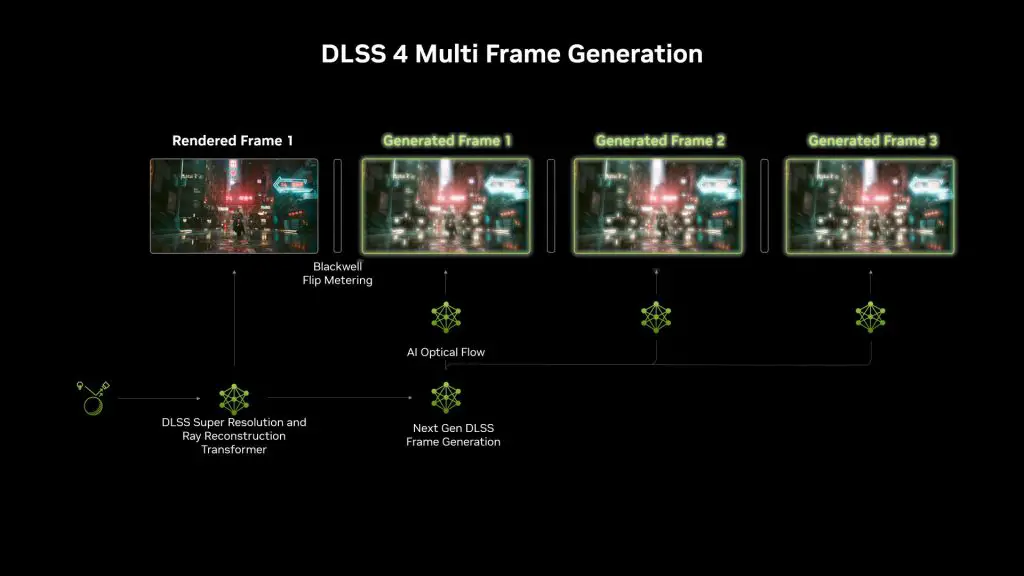 The Frame Generation introduced during the RTX 40 series era has been augmented and transformed into Multi-Frame Generation and sure enough, this is a brand new algorithm that allows Blackwell GPUs to predict and generate up to three future frames in advance.
The Frame Generation introduced during the RTX 40 series era has been augmented and transformed into Multi-Frame Generation and sure enough, this is a brand new algorithm that allows Blackwell GPUs to predict and generate up to three future frames in advance.
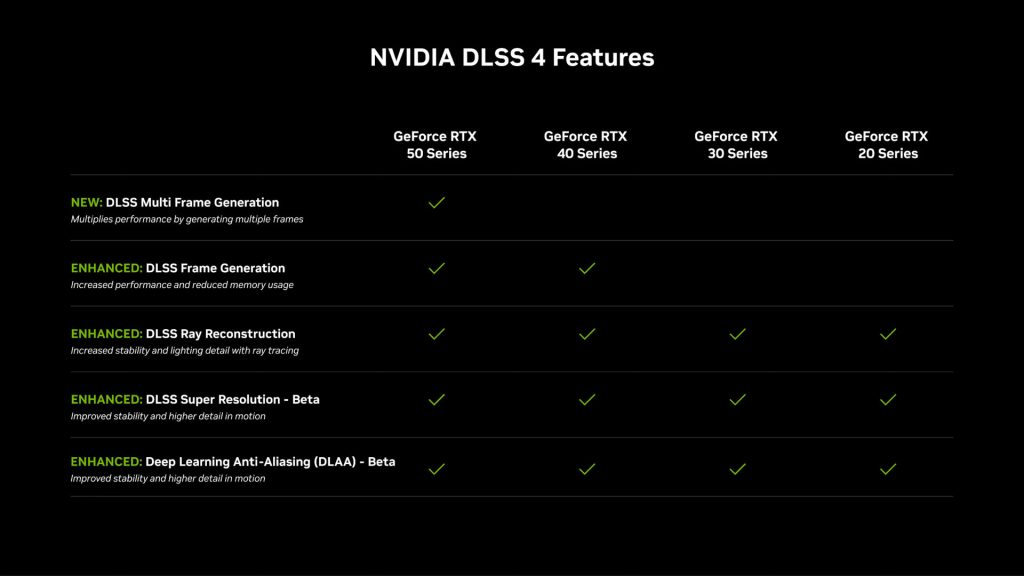 At launch, around 75 games and applications will be supporting DLSS 4 while the RTX 40 series GPU will have an update towards the single-frame Frame Generation algorithm that reduces VRAM usage in general.
At launch, around 75 games and applications will be supporting DLSS 4 while the RTX 40 series GPU will have an update towards the single-frame Frame Generation algorithm that reduces VRAM usage in general.
Expanding AI Integration
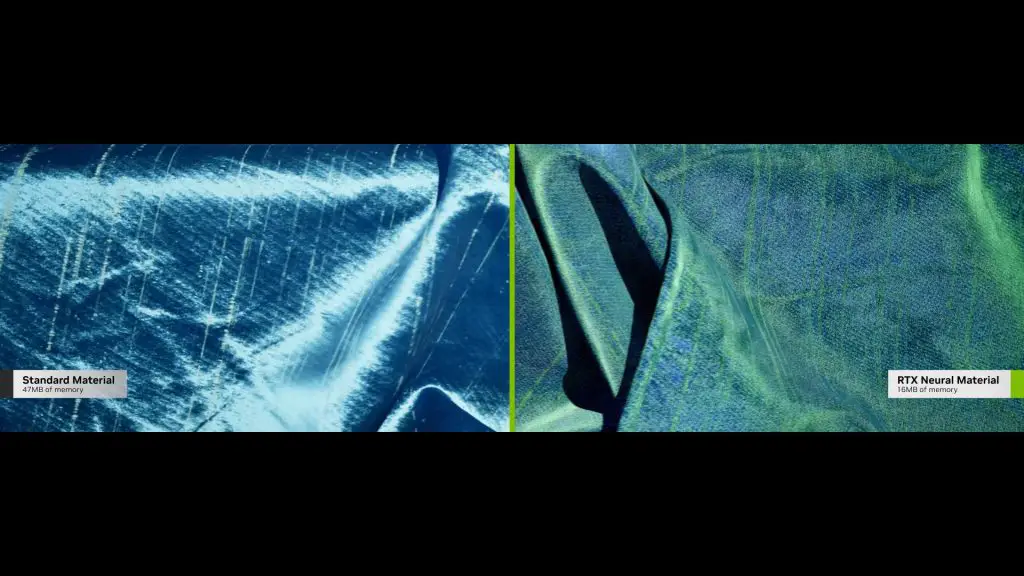
Another mind-boggling addition is RTX Neural Shaders capable of doing up to 7x texture compression thus freeing loads of GPU resources while delivering cinematic-quality textures and realistic ray-traced lighting on the other hand, the RTX Neural Face takes a similar approach with the subject being character faces.
Creative Applications and Future Outlook
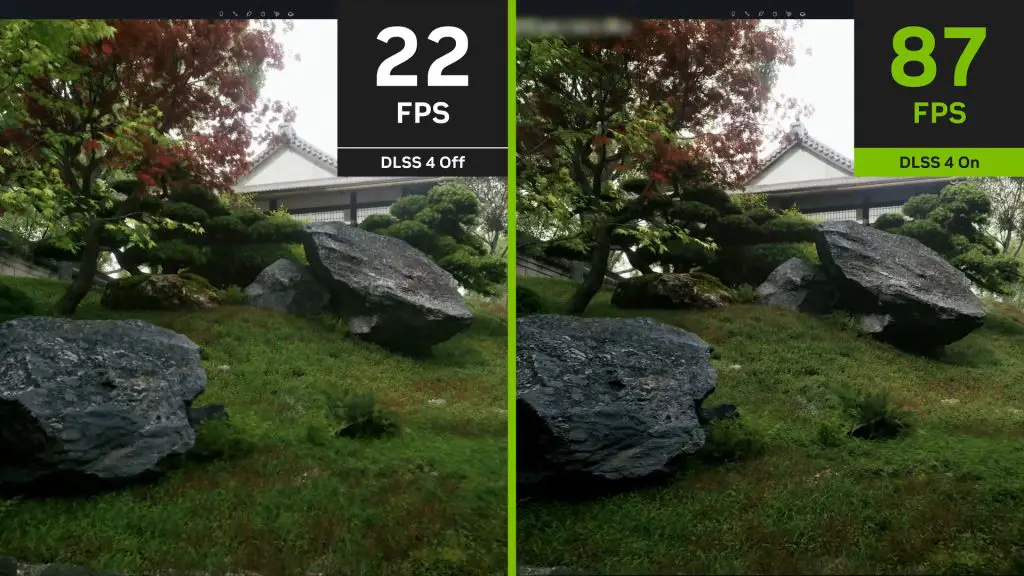
Industry professionals will be happy to know that upgrading to Blackwell GPUs will enhance their productivity once more thanks to DLSS 4 where applications like UE5 and Blender are getting even more FPS for smoother and less rage-inducing creative workflow.


